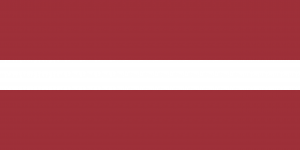Difference between revisions of "Language/Standard-latvian/Vocabulary/Body-parts-and-basic-health-issues"
m (Quick edit) |
m (Quick edit) |
||
| Line 8: | Line 8: | ||
As a Standard Latvian teacher, I understand the importance of learning the names of different body parts and being able to describe common health issues and injuries in Latvian. In this lesson, I will introduce you to the basic vocabulary related to body parts and common health issues. | As a Standard Latvian teacher, I understand the importance of learning the names of different body parts and being able to describe common health issues and injuries in Latvian. In this lesson, I will introduce you to the basic vocabulary related to body parts and common health issues. | ||
<span link>Consider broadening your understanding by checking out these related lessons: [[Language/Standard-latvian/Vocabulary/Clothes|Clothes]] & [[Language/Standard-latvian/Vocabulary/Drinks|Drinks]].</span> | |||
== Body parts == | == Body parts == | ||
| Line 89: | Line 91: | ||
[[Category:Standard-latvian-0-to-A1-Course]] | [[Category:Standard-latvian-0-to-A1-Course]] | ||
==Other Lessons== | |||
== | |||
* [[Language/Standard-latvian/Vocabulary/School-subjects-and-degrees|School subjects and degrees]] | * [[Language/Standard-latvian/Vocabulary/School-subjects-and-degrees|School subjects and degrees]] | ||
* [[Language/Standard-latvian/Vocabulary/Healthy-living-and-habits|Healthy living and habits]] | * [[Language/Standard-latvian/Vocabulary/Healthy-living-and-habits|Healthy living and habits]] | ||
| Line 103: | Line 104: | ||
{{Standard-latvian-Page-Bottom}} | {{Standard-latvian-Page-Bottom}} | ||
<span links></span> | |||
Revision as of 23:10, 27 March 2023
As a Standard Latvian teacher, I understand the importance of learning the names of different body parts and being able to describe common health issues and injuries in Latvian. In this lesson, I will introduce you to the basic vocabulary related to body parts and common health issues.
Consider broadening your understanding by checking out these related lessons: Clothes & Drinks.
Body parts
Let's start with the vocabulary related to body parts. Knowing the names of different body parts can be helpful when you need to describe an injury or pain in a specific area. Here are some examples:
| Standard Latvian | Pronunciation | English |
|---|---|---|
| galva | [ɡalva] | head |
| acs | [at͡s̪] | eye |
| auss | [aʊs̪] | ear |
| deguns | [dɛɡuns̪] | nose |
| mutes dobums | [mutɛs̪ ˈdoːbums̪] | mouth |
| zobs | [zɔps̪] | tooth |
| roka | [rokä] | arm |
| elkoņa locītava | [ɛlkounjä 'lɔtsitava] | elbow joint |
| roku locītava | ['rokou 'lɔtsitava] | wrist joint |
| pirksts | ['pirksts] | finger |
| kāja | [käːja] | leg |
| ceļa locītava | ['t͡seɫä 'lɔtsitava] | knee joint |
| potīte | ['potite] | ankle |
| pēda | ['peːda] | foot |
| padaža | ['padaʒa] | sole |
It's essential to note that Latvian uses different cases for body parts depending on their function in a sentence. For example, when a body part is the subject of a sentence, it is usually in the nominative case. When it's the object of the sentence, it will be in the accusative case.
Basic health issues and injuries
Now let's move on to some common health issues and injuries. Knowing the vocabulary related to these topics could be helpful when you visit a doctor or need to explain your symptoms to someone.
Here are some examples:
- Basic health issues:
- saaukstēšanās - [säüks̪tɛʃänoːs] - a cold
- drudzis - ['drudʑis] - a fever
- klepus - ['klɛpus] - a cough
- sāpes - ['säpɛs̪] - pain
- iekaisums - [jɛkäis̪ums̪] - inflammation
- zilums - ['zilums̪] - a bruise
- apdegumi - [apdɛɡumi] - burns
- Injuries:
- lūzums - ['luːzums̪] - a fracture
- sasitums - ['säs̪itums̪] - a contusion
- izspiešanās - [izspieʃänäsoːs] - a sprain
- traumatiska darbība - [traumaːtiska darbiːba] - a traumatic injury
- sasitums ar asmeni - ['säs̪itums̪ aʊr aʃmɛni] - a cut
It's crucial to know the vocabulary for basic health issues and injuries, but keep in mind that Latvian grammar also plays a significant role in forming sentences that describe them. Make sure to learn the correct declensions and conjugations, so you can communicate effectively with a doctor or a person who speaks Latvian.
Remember that learning a language takes time and practice, but it's worth it! Knowing basic vocabulary related to body parts and health issues can help you communicate effectively with Latvian speakers and understand more about the culture and people. Keep practicing and use the resources available to you to improve your skills.
Other Lessons
- School subjects and degrees
- Healthy living and habits
- Health
- Count to 10
- Music, films and books
- Family and relationships
- Feelings and Emotions
- Using public transport
- Days of the Week
- Food
